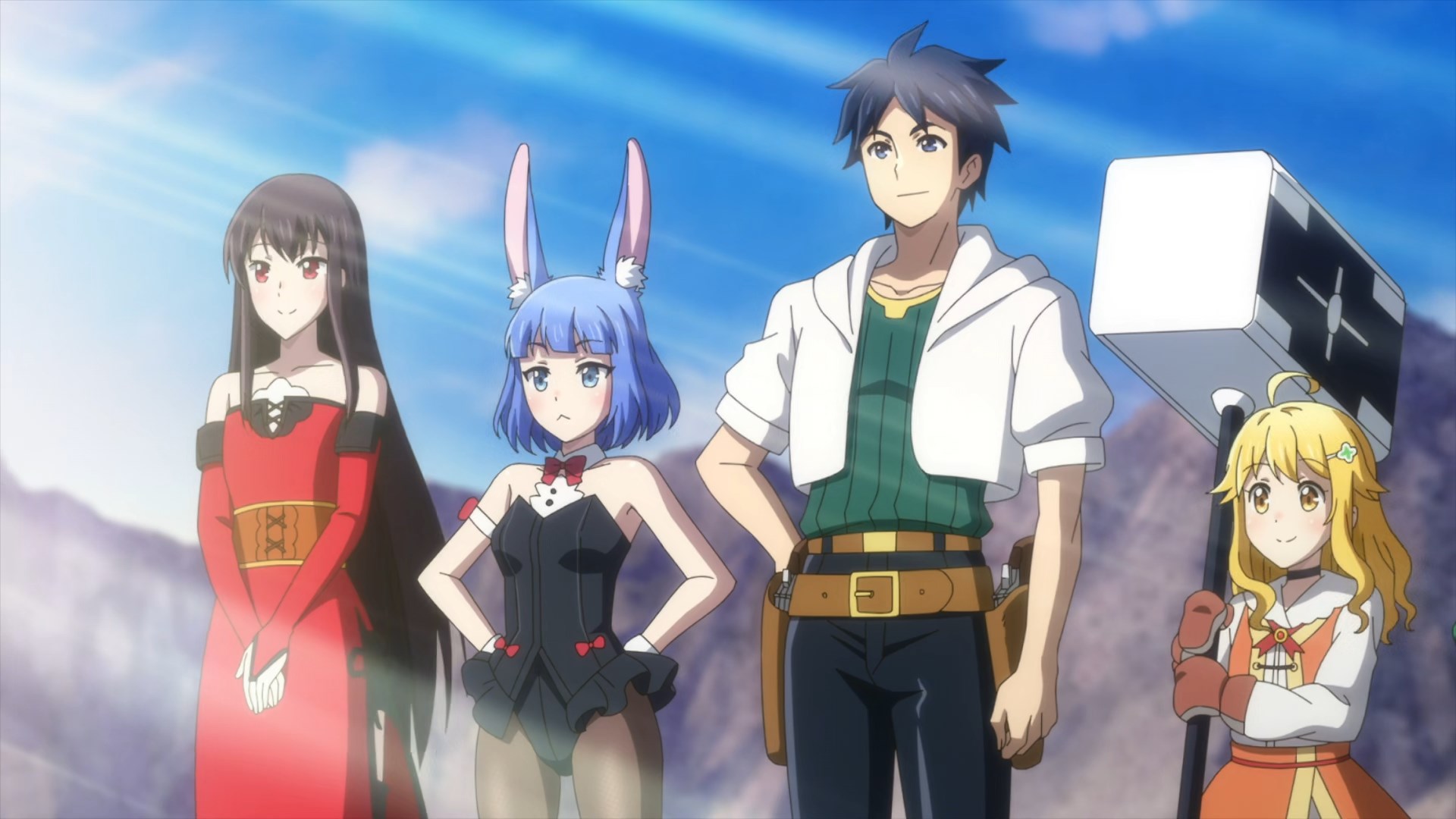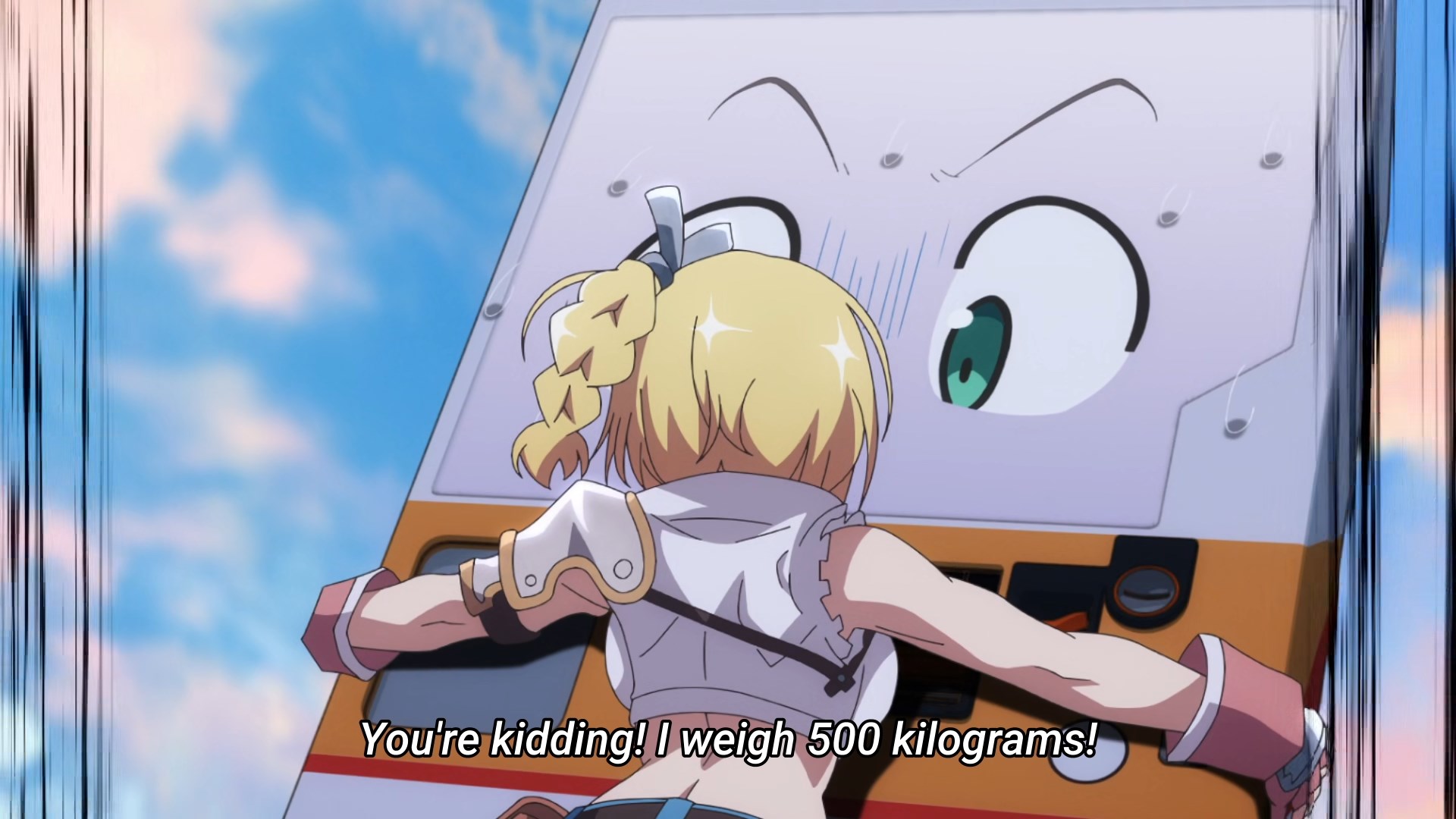In no particular order.
Zom 100: Zombie ni Naru made ni Shitai 100 no Koto
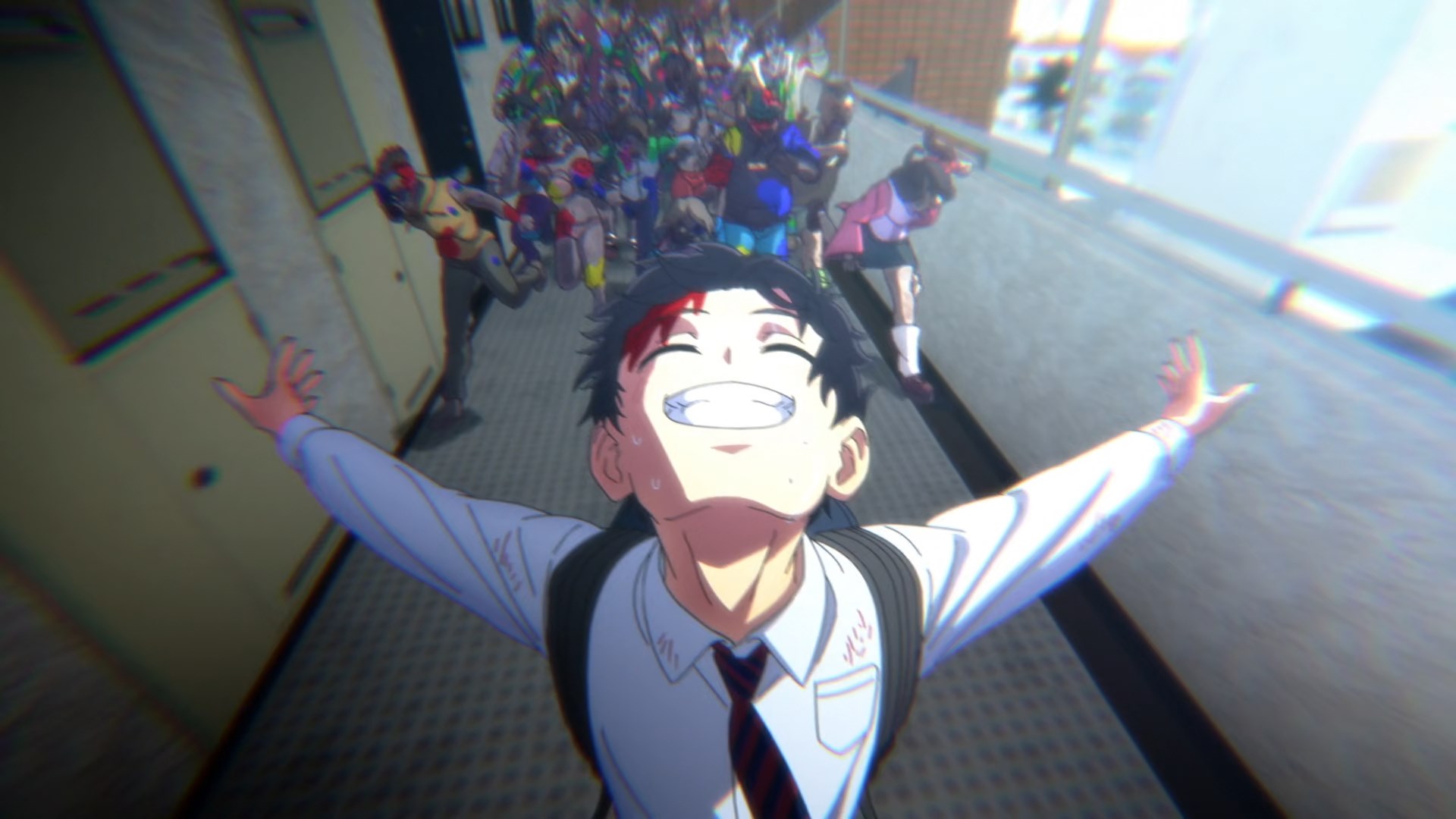
Previous series have taught us that the office work culture in anime Japan is bad enough that getting hit by truck-kun to reincarnate in a fantasy world is preferable and that the best you can hope for is a kindly kitsune taking pity on you. For poor Akira, a three year veteran of working for the blackest of companies, it’s the zombie apocalypse that finally liberates him. Now he can finally run through his bucket list of things he wanted to do before he was forced to work nearly 24/7. A fun concept, but what makes it really worth watching is the execution by new studio Bug Films. See Sakugablog for what makes this production so special. Best looking anime this season.
Bang Dream! It’s Mygo!!!!!
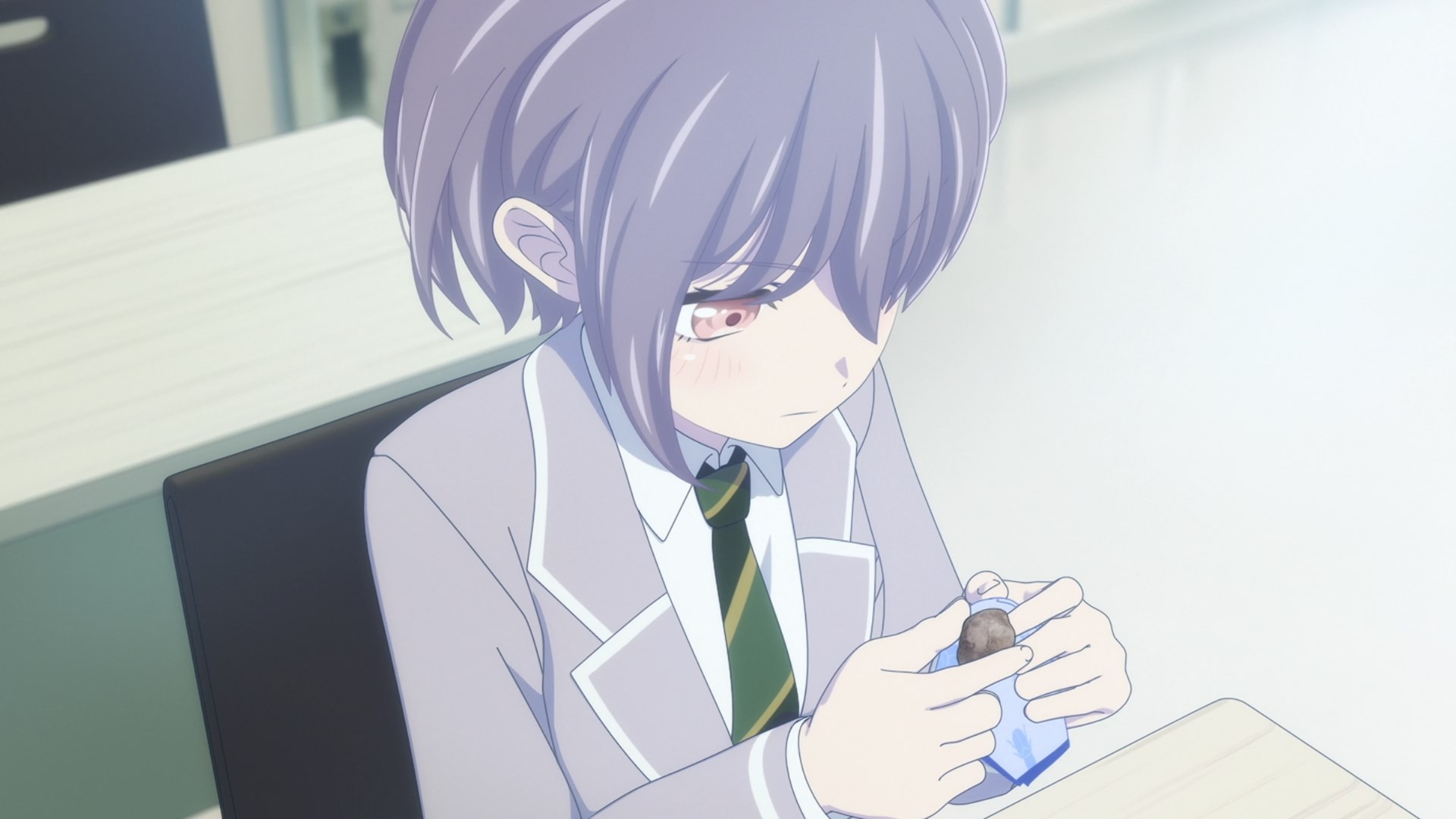
I already raved about this series; if you like idol-adjecent anime this is a great entry point in the world of Bang Dream. I really love Tomori, who seems very much to be neuroatypical, and her relationship with Anon, the transfer student who wants her to join her band. Anon as well as their classmates respect Tomori’s bounderies even as she gently pushes her to take a step out of her comfort zone. The way Tomori herself also seeks friendship by sharing her latest obsessions, like her penguin bandaids is adorable and slightly sad. What sets it apart from other Bang Dream series is its darker tone: it starts with the implosion of Tomori’s previous band and it has scarred her. Anon herself also has a bit of a dark past while the ex-members of Tomori’s band are equally scarred by its breakup. Anon here is the outsider who can see through the group’s dynamics, the catalyst who can get them to change and grow again.
Watashi no Shiawase na Kekkon

Long abused and neglected Saimori Miyo is forced by her family into an engagement with Kudou Kiyoka, who has scared off all his previous marriage partners and has therefore the reputation of being a monster. Three episodes in and it’s clear how much the neglect and abuse of her family after her mother died has stunted Miyo’s personality. Nothing more than a servant in her family home, she’s meek, quiet and terrified of making a mistake that will see her sent back there. She’s wary of kindness and confused when her fiancé asks about her preferences. Her abuse has not been magically fixed by escaping her family or the love of a good man; she’s still damaged by her experiences. There’s also a tension in the way others, like Kiyoka’s elderly housekeeper see her meek personality as that of the perfect yamato nadeshiko. Even more so than MyGo this is a melancholy, sombre anime that’s occasionally hard to watch.
Horimiya: Piece
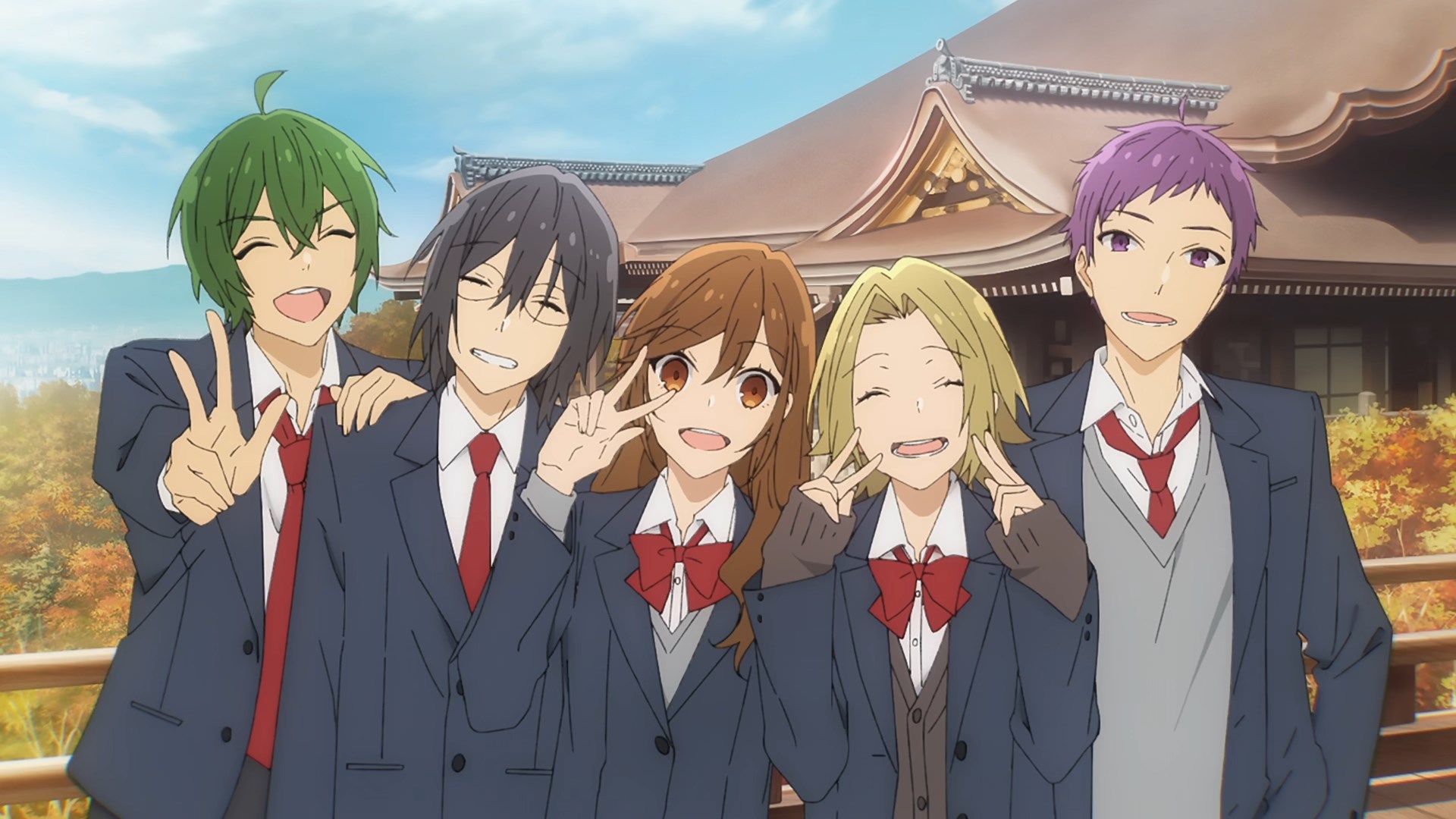
Horimiya got an adaptation two years ago that took thirteen episodes to cover the entire manga and the romance between Hori and Miyamura. To do so however it skipped a lot of chapters less relevant to the central romance. This new season adapts those. I actually like this, even if it could be argued that a two cour season would’ve been a better way to adapt it. There’s a mellow vibe to this season as it goes for comedy rather than romance. Episodes have been grouped thematically: the first one was about the class truip to Kyoto e.g. It does have the same weakness as the manga, as every now and then I have to remember who this character actually is. Having the hair colours actually visible helped a lot there.
Genjitsu no Yohane: Sunshine in the Mirror
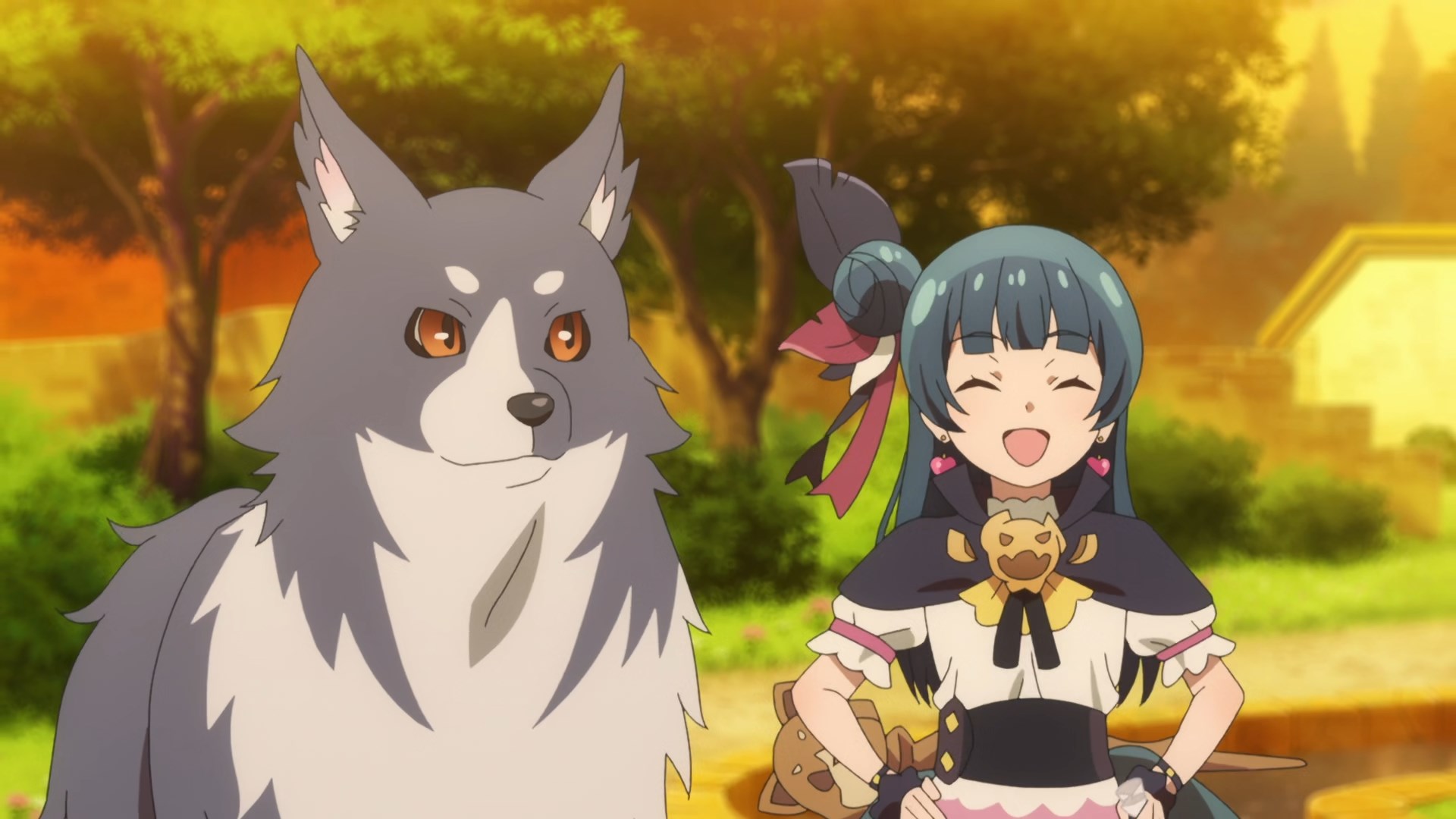
A brilliant idea to make a fantasy anime starring Yohane, the chuuni one from Love Live Sunshine who pretended to be a fallen angel. Having failed to become an idol in fantasy-Tokyo she returns to Numazu, her hometown, where she gets “summer homework” from her mother: she has to find out the one thing she really wants to do. Also, there’s a sinister noise plaguing the town that only children and failed idols can hear, while something is corrupting the animals of the nearby forests. So far this plot has been mostly confined to the background while Yohane meets up with the rest of the Love Live Sunshine cast. Most of them have similar personalities to the original, but most noticably Mari is very different. As are the relationships between the characters, especially their relationship to Yohane herself. Yohane/Hanamaru shippers eat good here. One minor dislike I had was how much the first two episodes made Yohane out to be a lazy failure; that could’ve been dialed back a bit. I’m also a bit wary of Lialapse, the huge dog that’s supposedly Yohane’s sister and which only she can hear speaking.
Last season ended on a high for me because it had half a dozen romance anime that were as good as or even better than their source manga. Skip to Loafer, Kimi wa Houkago Insomnia, Watashi no Yuri wa Oshigoto Desu!, Boku no Kokoro no Yabai Yatsu, Jijou o Shiranai Tenkousei ga Guigui Kuru, Yamada-kun to Lv999 no Koi o Suru were all excellent as were the slightly more formulaic Otonari ni Ginga and delayed from the previous season Kubo-san wa Mob o Yurusanai. It has been a long time since a non-isekai genre so dominated a season. Nor should we forget there was both Kidou Senshi Gundam: Suisei no Majo and Birdie Wing: Golf Girls Story both sticking the landing in their respective romances.
In contrast, this season has regressed to the mean, with isekai and related shows dominating again with no real outstanding shows in it unlike you can tolerate Mushoku Tensei. Which I can’t. There aren’t that many series I’m at all enthusiastic about or looking forward to seeing each week, except for the ones above. Lots of shows I wouldn’t mind watching, but little interest to actually start watching. But maybe there are shows that I’ve missed that you like?

